How to Make the Most Out of Your Standup Meetings

Rajiv is the co-founder and CEO of Tandem, a virtual office for hybrid and remote teams.
What did you do yesterday? What do you plan to do today? What’s standing in your way?
A grounding ritual.
Standup meetings are quick, daily check-ins (traditionally done standing in a circle) that enable small, collaborative teams to coordinate. At Tandem, our 15 minute standups help us stay on track, bubble up issues or questions, and offer a daily human touch-point.
Ideally, standup meetings accomplish 3 things:
- Gain a clear understanding of what your team is working on.
- Identify gaps or any roadblocks.
- Have a human moment together. (And this one is particularly important.)
After a lot of trial and error, our team at Tandem came up with a unique way to run daily standups. The process we follow helps us coordinate and advance on our individual projects, but also get to know each other and work better as a team. So here’s our 5-step guide to hosting the perfect standup meeting:
1. Collect your thoughts before you meet.
Your standup meeting should be a mix of async and synchronous communication. Before you hop on a call or meet in-person, take some time to write down a few bullet points that summarize what’s on your plate and anything worth sharing. Our team uses a #standup Slack channel, where we all add our notes before we get together.
This does a few things: It helps you to start your day with some light planning, and it turns your standup call into an opportunity to communicate and coordinate, instead of an overview of everyone’s to-do list.
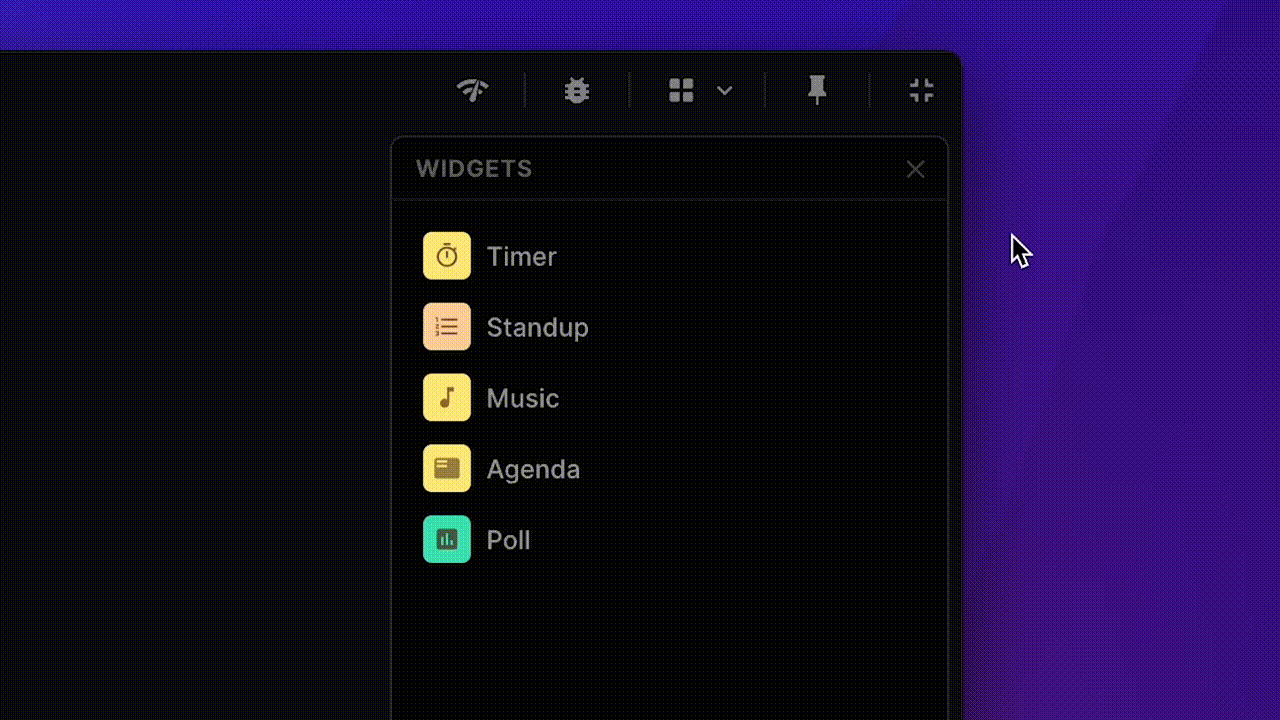
2. Read silently together.
Now that everyone shared their notes in advance, you want to take some time to go through them. We kick off our standup with a 3 minute timer, and mute everyone - sometimes playing background jams with our music widget. We then go through our slack channel to understand what everyone is working on, and where we can contribute.
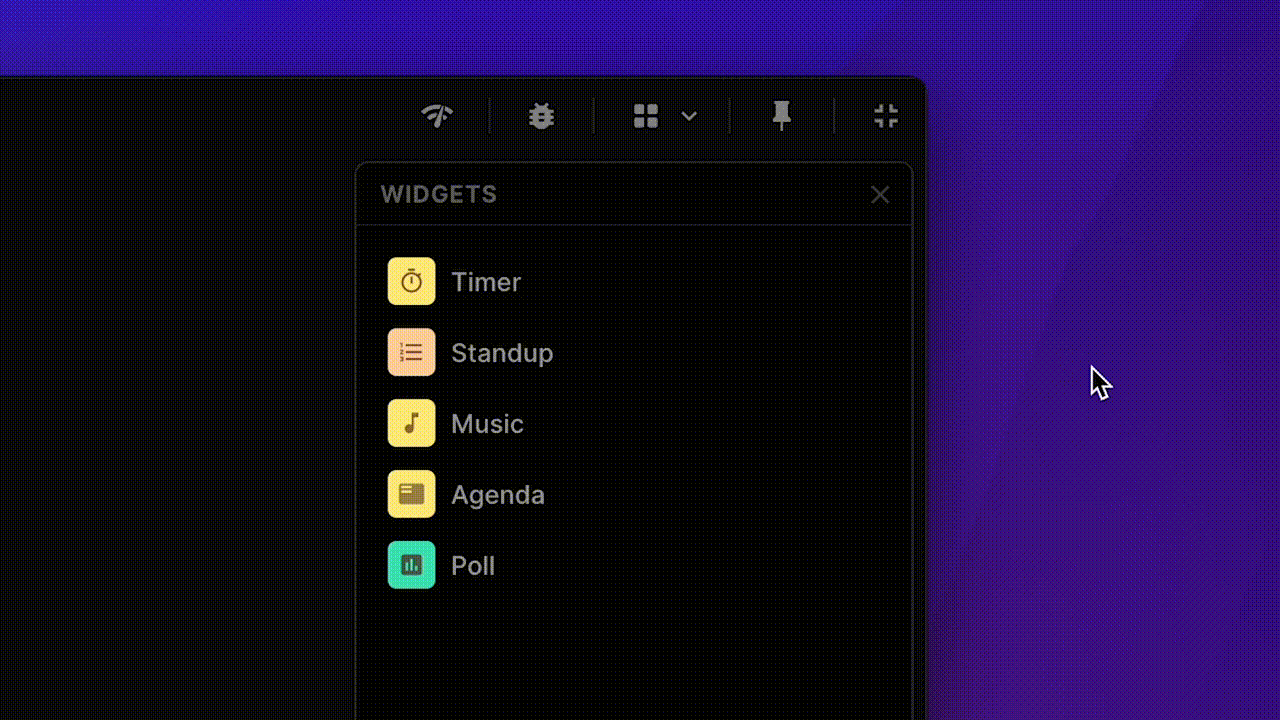
This brief writing and reading exercise allows people to quickly absorb information in parallel and connect the dots with their teammates.
3. Pass the mic.
Once our timer widget dings, we use our standup widget to get a randomized list of all the call participants. This helps us kick off the discussion and gives everyone a chance to ask a clarifying question, share something personal or simply say hello.
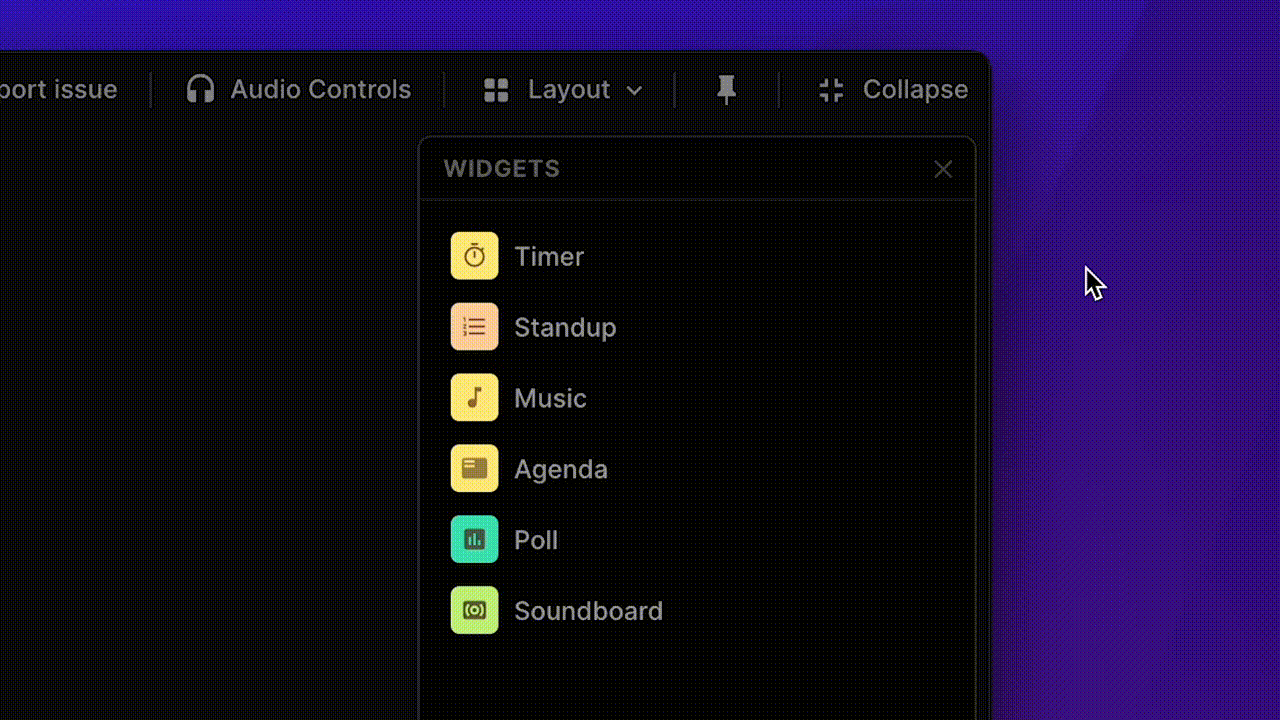
The goal here isn’t to repeat what you already posted in your slack channel, but rather to communicate and coordinate in real time - some things are just easier to discuss during a call instead of waiting for an email reply.
4. Don’t deep dive - parking lot instead.
As we’re going through our daily updates, we often find out that some topics deserve a deeper dive - we call these our “parking lot items”.
We add these items to our handy agenda widget, and get back to them at the end of the call or create quick meetings to go through them in more details. This helps us stay on track and avoid boring other team members with overly complicated conversations.
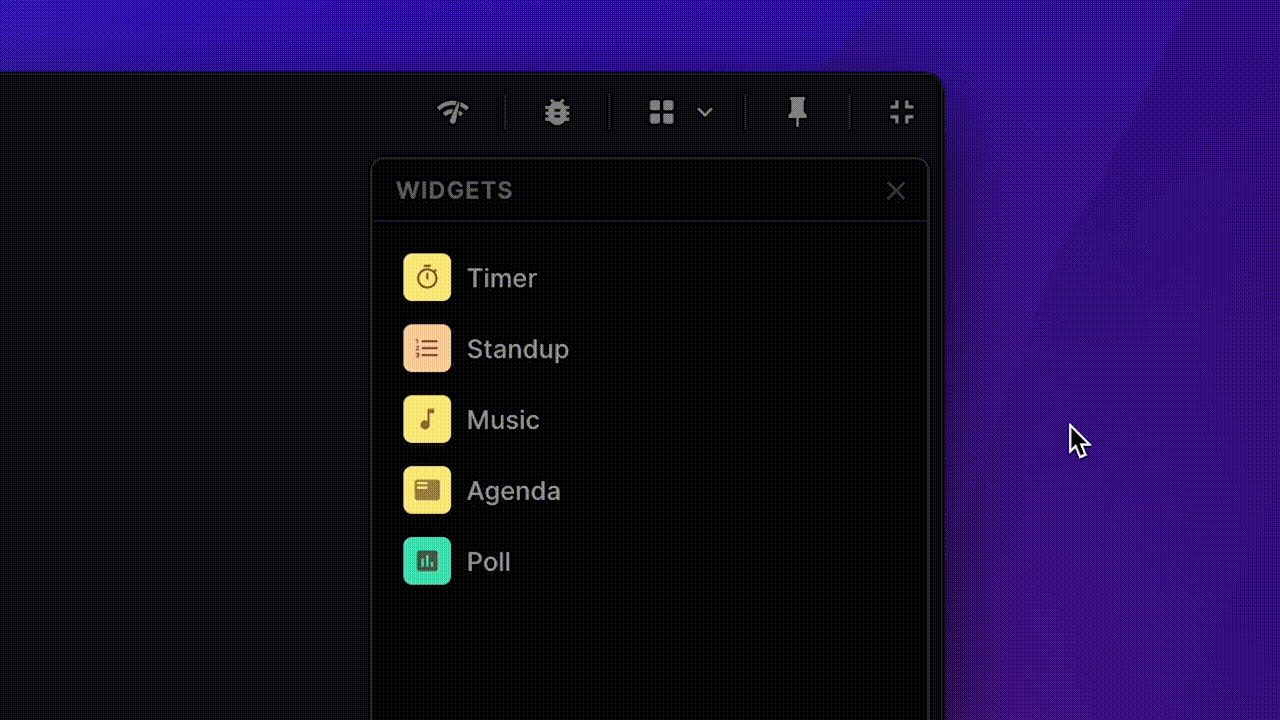
5. Don’t forget to end!
You’d think that this last step is obvious, but officially calling an end to standup is important. So once everyone has had a chance to speak, we announce that the “Standup is over!”. If you have a parking lot item you want to discuss, you can stay on the call and go through it with your teammates. If not, you’re welcome to hang out and co-work, or go on with your day!
And for parking lot items, love the speed of using crosstalk for multiple conversations. Simply click on 👤 button.
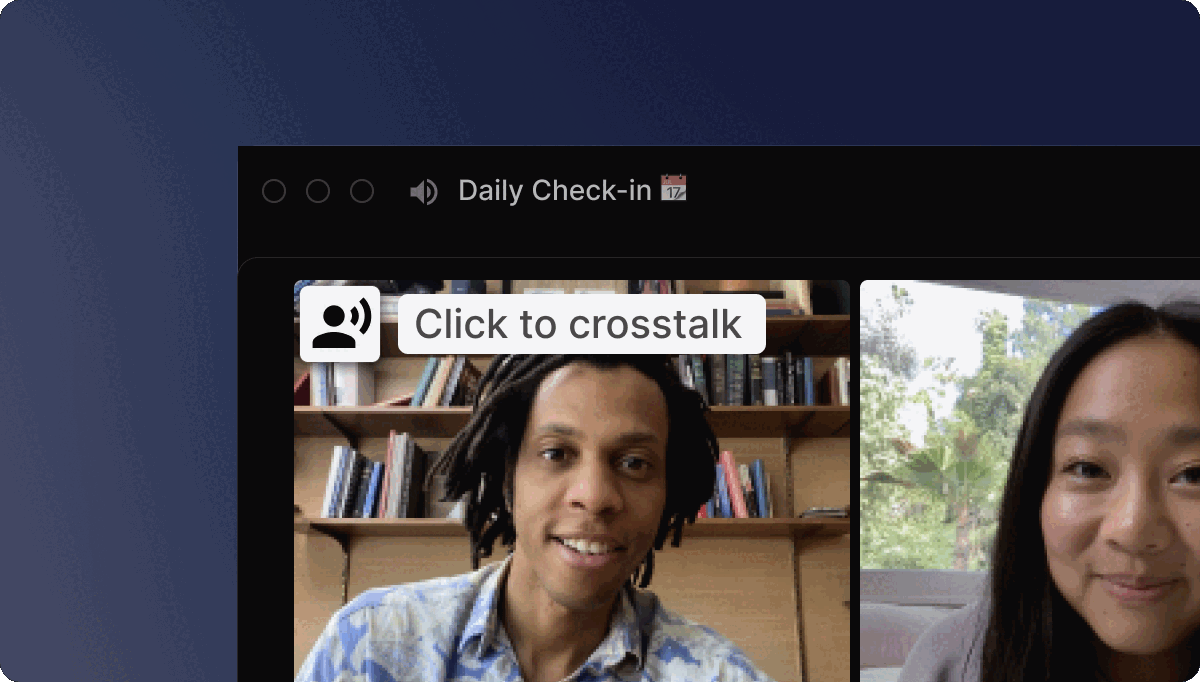
The human touch.
Even though the main goal of the standup meeting is coordination, it’s important to create space for human moments, and doing a mix of written and live standup achieves this. Sometimes, we just want to check on our co-worker’s puppy or talk about our cool weekend plans, and that’s great!
These discussions happen all the time in the office, but when we transitioned to remote and hybrid work, every meeting became hyper focused on getting things done. And even though you might feel like that boosts your productivity, it can also negatively impact your team.
There’s a reason why small talk makes up over a third of all adult human speech. Research has shown that water cooler chats at the office can lead to higher positive emotions - friendly feelings, gratitude, pride, camaraderie. And these positive emotions tend to energize you, make you feel like you’re part of a team, and give you that little extra boost you need to dive into the task you’ve been avoiding for a week.
In a hybrid and remote workplace setting where every interaction is planned, these random run-ins and energy boosts are noticeably absent. And when you take away these genuine moments of connection, your team’s morale, synergy, and ability to collaborate all take a hit. Simply put - it makes you feel like you’re working with strangers you know nothing about on a mandatory group project. So I encourage you to purposefully drift away from your project review on your next call. Share something you’ve recently done that you are excited about, or chat about the latest Netflix show. You’ll be pleasantly surprised with how many things you have in common with your team.
I hope these tips and tricks help you take your standup meetings to the next level. If you have any thoughts, questions, or suggestions you’d like to share, let’s chat!
@rajivayyangar | rajiv@tandem.chat
